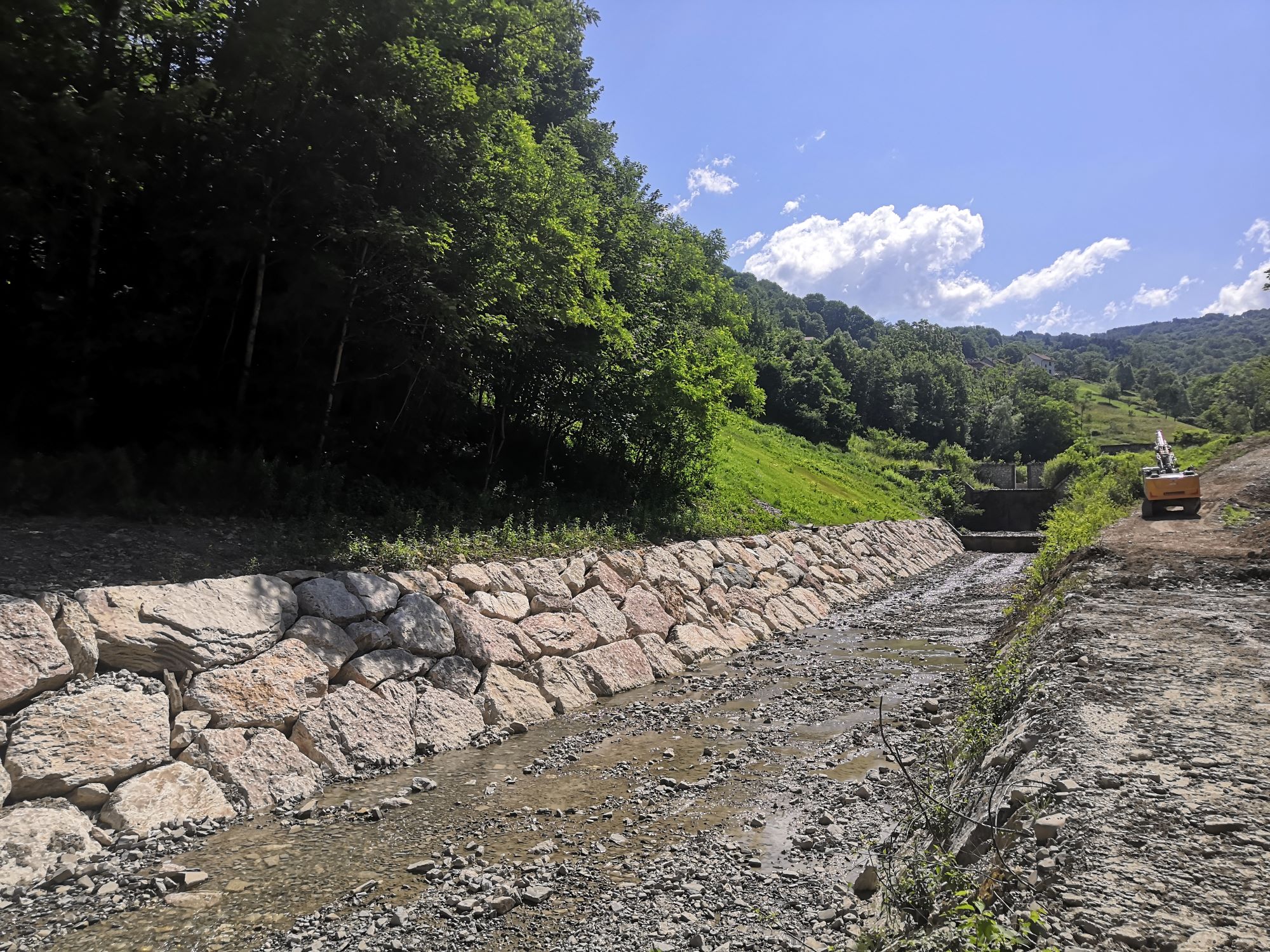The intervention area is located along the bed of the Valturcana stream, in the municipality of Alpago. The design was carried out in two phases, each focused on a landslide affecting the stream and threatening its obstruction: the Saviane landslide, approximately 3.5ha, and the TenoRibego landslide, about 14 ha. The works, for both phases, aimed to both restore the hydraulic functionality of the Valturcana stream bed and clean and reshape the landslide slopes to ensure a preferential path for the runoff of meteoric water towards the planned surface drains, which will allow its removal and discharge into the Valturcana stream. The interventions in the stream bed were partly dedicated to the restoration of existing structures, mostly closed weirs from the fascist era with historical significance, requiring specific design precautions to restore the original stone claddings. These interventions were then integrated with new works, such as cliffs and mass concrete slabs for erosion protection, as well as the insertion of two new weirs made by installing “umbrella” mono-anchorage structures. The two rows of umbrellas were located at the foot of the Teno-Ribego landslide to stabilize the stream bed but also as a garrison at the foot of the landslide and to weigh it down. The choice of mono-anchorage technology arose from construction needs, as due to the difficult accessibility of the sites, the creation of a classic concrete weir was not technically and economically advantageous.

